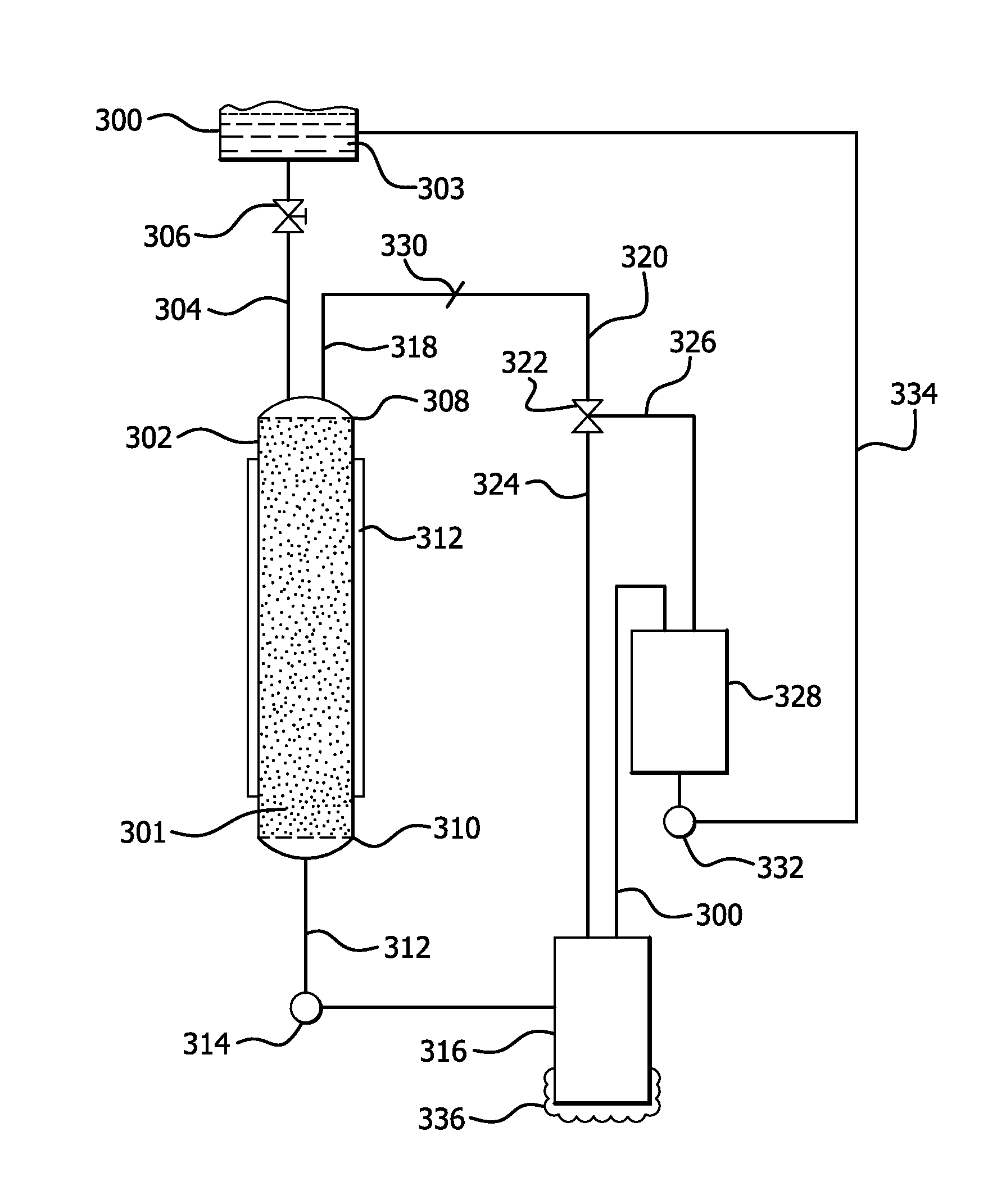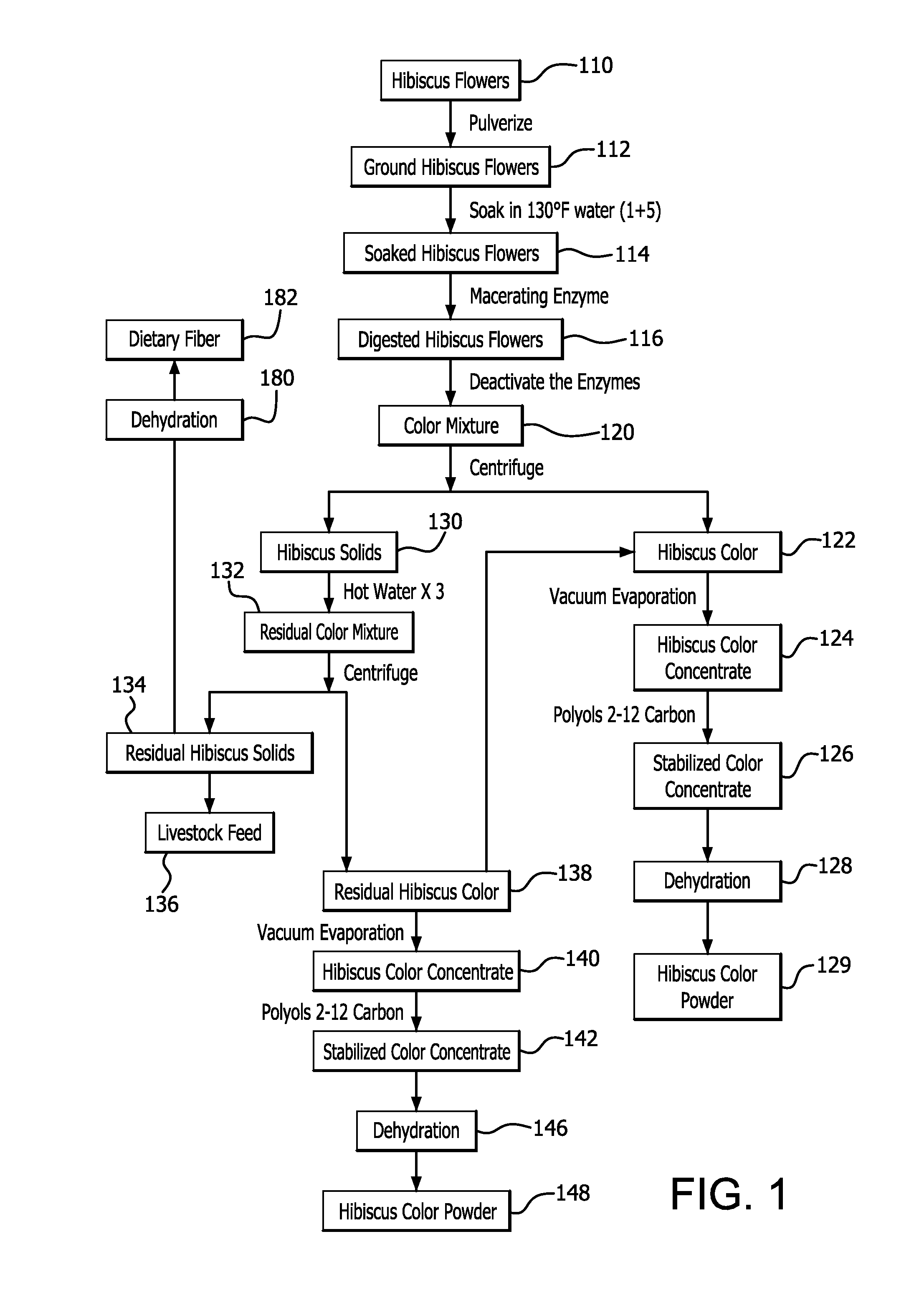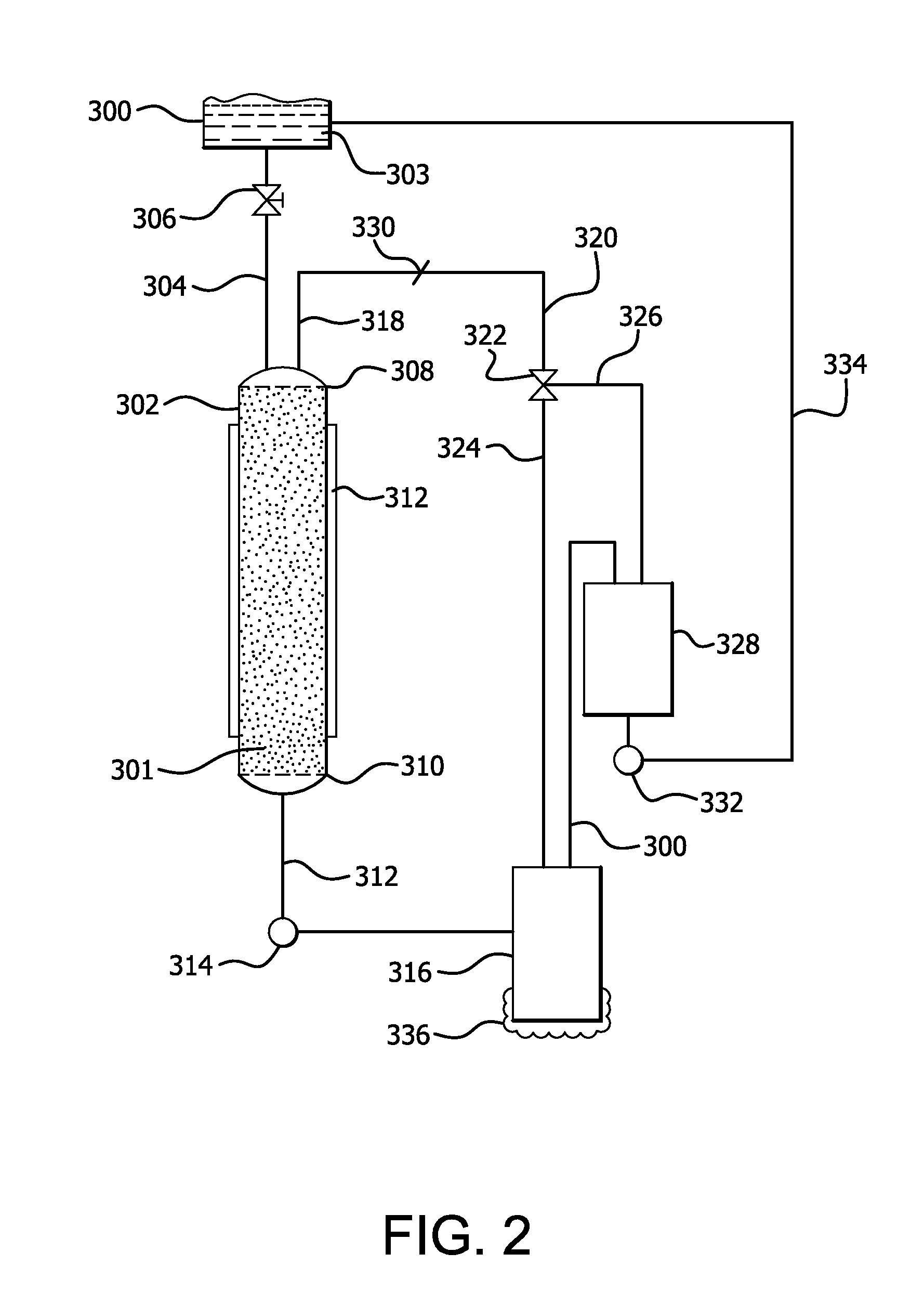Processes for Extracting Colors from Hibiscus Plants
a technology of hibiscus and color, which is applied in the field of process for extracting colors from hibiscus plants, can solve the problems of inferior products, inability to use colorants in food, and relative instability of colorants
- Summary
- Abstract
- Description
- Claims
- Application Information
AI Technical Summary
Benefits of technology
Problems solved by technology
Method used
Image
Examples
Embodiment Construction
[0021]Illustrative and alternative embodiments of processes to extract a stable natural color from hibiscus flowers will be discussed with reference to FIGS. 1-3.
[0022]For this disclosure, the term “hibiscus” takes on its ordinary meaning to refer generally to a genus of flowering plants in the mallow family, Malvaceae. An illustrative and non-limiting example of hibiscus is Hibiscus rosa-sinensis. The term “hibiscus flower” or “flower” takes on its general meaning to refer to the flower of hibiscus, also called a calyx, sepal, or roselle.
[0023]The terms “hibiscus color,”“color,” and “coloring” mean (1) a solution of compounds comprising one or more of (a) organic acids (such as, for example, citric acid, malic acid, oxalic acid) and / or inorganic acids, and (b) antioxidants, including, but not limited to, anthocyanin and carotenoids dissolved in a solvent, such as, for example, water or other suitable solvent including a stabilizing agent, and (2) in the event that substantially all...
PUM
 Login to View More
Login to View More Abstract
Description
Claims
Application Information
 Login to View More
Login to View More - R&D
- Intellectual Property
- Life Sciences
- Materials
- Tech Scout
- Unparalleled Data Quality
- Higher Quality Content
- 60% Fewer Hallucinations
Browse by: Latest US Patents, China's latest patents, Technical Efficacy Thesaurus, Application Domain, Technology Topic, Popular Technical Reports.
© 2025 PatSnap. All rights reserved.Legal|Privacy policy|Modern Slavery Act Transparency Statement|Sitemap|About US| Contact US: help@patsnap.com



